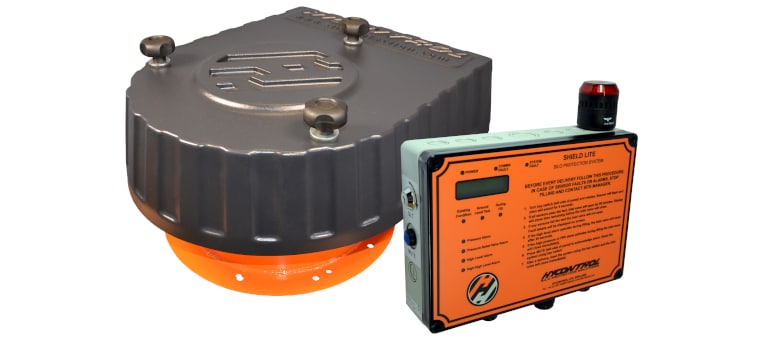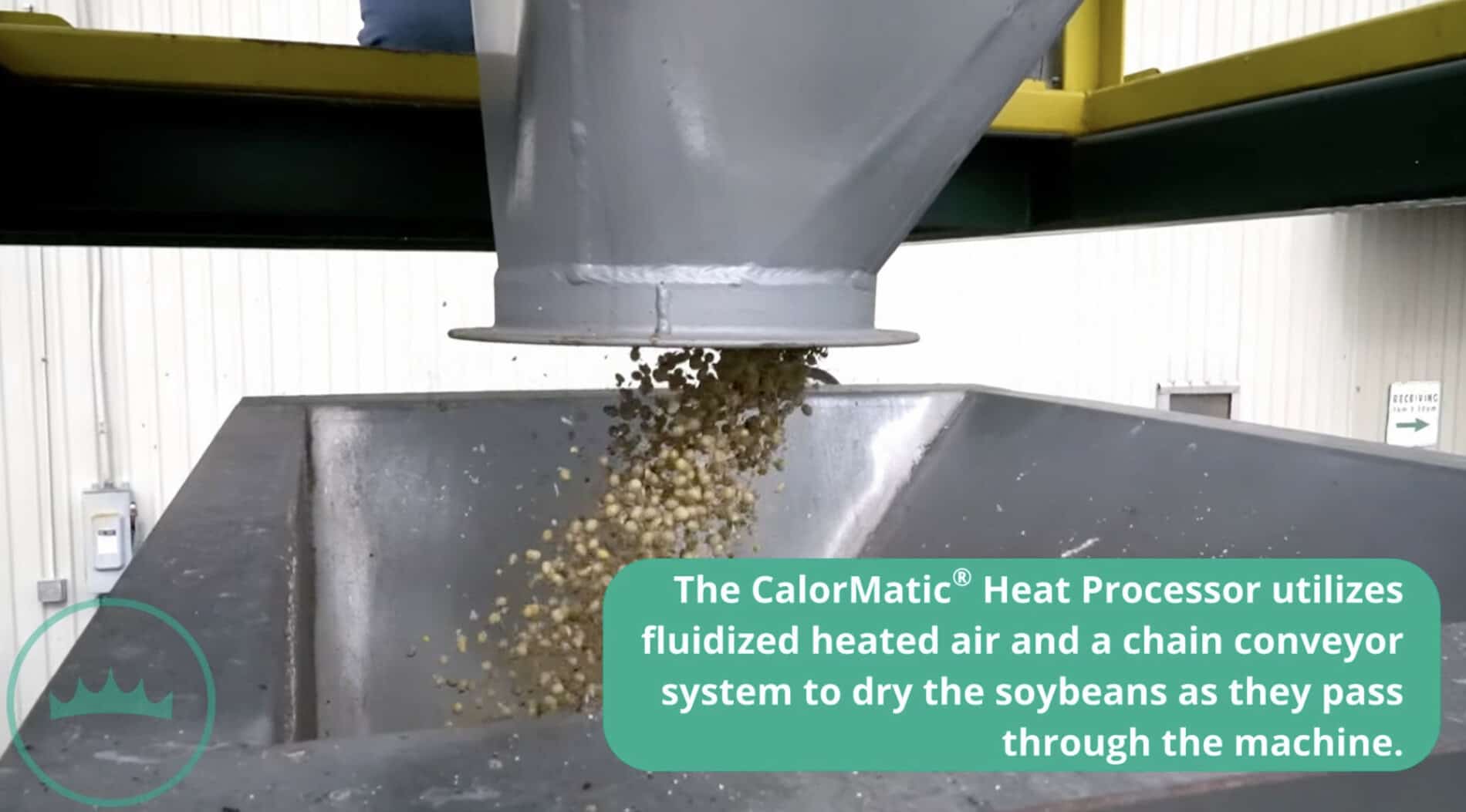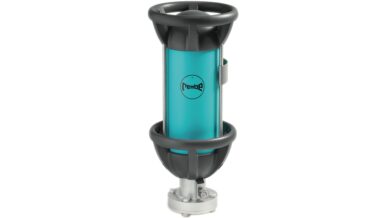Silo over-pressurization poses a serious threat in terms of pollution and can even put lives at risk. Water companies are already under pressure to minimize the impact of treatment works on the local environment, especially in terms of odor and pollution, and the potential for lime powder escaping from storage silos is a serious risk. However, this is avoidable with the implementation of proper protection.
Powdered lime is utilized extensively in the treatment of wastewater; for example, it is commonly used to reduce odor in raw, primary sludge, as a cost-effective alternative to using digesters. It is also used in other water treatment processes to help balance pH levels, and as part of composting processes for sludge removed from the bottom of primary tanks after it has been de-watered and compressed. The lime and remaining water in the sludge together creates a heated chemical reaction, accelerating the process.

As with other vessels storing powdered products, lime silos are susceptible to over-pressurization arising from filtration blockages or excessive input pressures from delivery tankers. This results in serious problems for sites: powder escaping into the environment (particularly problematic with corrosives like lime); damage to equipment and buckling of the silo; and worst of all, potential rupturing or for the filter unit to be blown off the roof by pressure build-up.
Level measurement specialist Hycontrol has designed silo protection systems for over twenty years and has witnessed first-hand the potential problems. “The photos taken by our survey engineers speak for themselves,” says Hycontrol Managing Director, Nigel Allen. “We regularly see silo-tops covered in a thick layer of powder, often blowing across the site in great clouds during a fill. We see damaged untested pressure sensors. We see air vent/filter units that are so clogged with powder that they are effectively useless. Companies in the water industry and beyond are worryingly ignorant about the consequences of poorly-maintained, poorly-monitored silos. It’s quite frightening that operators accept pressure blowouts via the pressure relief valve, saying ‘It’s OK – the PRV is doing its job’. This couldn’t be further from the truth: PRVs are there as a last resort. In a healthy silo system, pressure during delivery should never reach a level where the PRV is forced to open. A PRV blowing is the final symptom of a pressure safety problem, and the integrity of the silo itself is at risk.”
In the worst examples of neglected silo protection, trapped air pressure can result in filter units being literally blown off the silo roof, causing massive amounts of damage and putting the lives of workers in the yard below at risk. A far more common problem, however, is product leakage. As mentioned above, this is an especially serious concern when dealing with corrosive lime powder. “There is a common misconception that the biggest risk to silos comes from overfilling, which is simply not the case,” states Allen. “Pressure is the real issue and the cause of the majority of leaks. Lime powder pollution will result in serious environmental damage with the potential for adverse health effects, should it go unchecked. Inevitably this could have dire consequences for water processing sites and operators. We have even started to see a trend of sites erecting scaffolding around silos and covering it in plastic sheeting, in an attempt to trap powder blowing out of the silo. This is in itself almost comical, but it also shows the lengths to which those responsible for lime powder silos are attempting to turn a blind eye to the root problems. Ultimately it will not work and things will get worse.”

What causes over-pressurization problems?
To address this problem, one must first understand how excessive pressure in a silo occurs.
Product is pneumatically transferred into a silo by fluidizing it with compressed air and then blowing it in. If the air used to pneumatically convey the powder can exit the silo without restriction via its venting unit then there will be no over-pressurization issues. Silo over-pressurization only occurs when the volume of air entering the silo exceeds the volume of air that can escape it. This occurs by either the airflow out of the filter being restricted in some way or the pressure blowing in from the tanker exceeding the filter’s maximum capability.
Filter housings at the top of the silos are designed to vent the silo during filling, whilst preventing dust escaping into the atmosphere. Normally these are fitted with some form of self-cleaning system, typically mechanical shakers or reverse jet systems. Although filter manufacturers give recommended check routines and filter replacement schedules, in practice it would appear these are regularly ignored. A faulty operation can be caused by a range of issues, including blockages or the fitting of incorrect filters. Most powders form hard compounds when mixed with water from the atmosphere, further limiting venting efficiency.
Delivery tankers are pressure-tested vessels typically capable of withstanding up to 2 bar (29 psi) pressure. Storage silos are not, and can rupture at as little as 1-2 psi above atmospheric pressure. It is therefore easy to understand how complacency or haste on the part of drivers can lead to filling pressures greater than the silo can handle. Statistics collated by Hycontrol suggest that slightly over half of all silo over-pressurization incidents can be attributed to poor driver behavior, although this has hitherto been difficult to manage.

Essential safety equipment must be tested
To prevent problems during deliveries all silos fed from a road tanker should have safety systems installed on the silo-top, including a pressure relief valve, pressure sensor, level probe, and air filter. However, this creates an additional concern in the shape of working at height. The equipment forming these silo-top systems can only be tested in situ, effectively meaning that silos must be climbed before every delivery to perform a functionality test. Even with correct safety gear, working at height is very dangerous. Falls from height are the largest single cause of workplace fatalities in the UK according to the HSE, accounting for an average of 37 deaths per year between 2013 and 2018. Therefore, the dilemma is a choice between neglecting safety equipment or creating working at height risks.
Even if we disregard the problems of working at height, we have to ask: what can engineers actually do when they are at the top of the silo? And furthermore, how do you physically test the operability of a relief valve or pressure transmitter without removing them from the silo?
Industry guidance, or lack thereof
The MPA (Mineral Products Association) publishes comprehensive guidelines for silo protection systems in quarries and cement works, but there are little or no such recommendations for powder silos used in other industries, including water and waste treatment. However, the principles are the same for protecting pneumatically-filled silos anywhere: pressure and level during filling must be monitored, there must be a suitable filtration unit, and a pressure relief valve as a final defense. There should also be alarm systems and automatic shut-off valves to protect the integrity of the silo.
However, any silo safety protection system is only as reliable as the last time all the components were fully tested, and as we have seen this is frequently neglected.
Testing from ground level
The solution is to incorporate ground-level testing (GLT) at the heart of silo protection design, whereby the crucial safety components can be tested by operatives with both feet on the ground prior to each fill. This not only removes working at height risks but guarantees full protection system functionality every time the silo is used. Only when all the safety devices have passed the checks should the safety interlock allow the silo inlet valve to open and the delivery to commence. Testing is essential but has often been ignored by staff as it is time-consuming, or it has not been practical in the past. With a GLT-based system such as Hycontrol’s new SHIELD Lite, a silo cannot be filled without a full test operation.

As an added benefit, an effective protection system can serve as a powerful predictive maintenance diagnostic tool by recording critical near-miss events that occur during the filling process. This information allows managers to carry out effective predictive maintenance by means of a logical step-by-step root cause analysis (RCA) process to understand why the problems are arising. In the case of SHIELD Lite, the system not only records critical events but also helps identify filter blockages or driver behavior problems. If there are excessive high-pressure or relief valve events the system will lock, forcing corrective action.
A comprehensive silo protection system can offer more than just a barrier to the risks of over-pressurization; it can actually improve site safety, reduce maintenance requirements and working at height, and self-diagnose faults before they become problematic.
Conclusion
There is strong evidence that many lime storage silos are disasters waiting to happen. Powder storage silos can rupture at pressures as low as 1 or 2 psi; congested filter housings can be ejected at similar pressures. Lime powder is frequently escaping into the environment and, if left unchecked, these spillages will only get worse.
It is imperative that any silo pressure safety system be easily verified by testing critical components before each and every delivery – without having to climb to the top of the silo. By using systems that monitor and control deliveries effectively and self-diagnose issues before they become problems, it is possible for water treatment sites to achieve total silo safety – protecting the environment, site personnel, and the public.









































